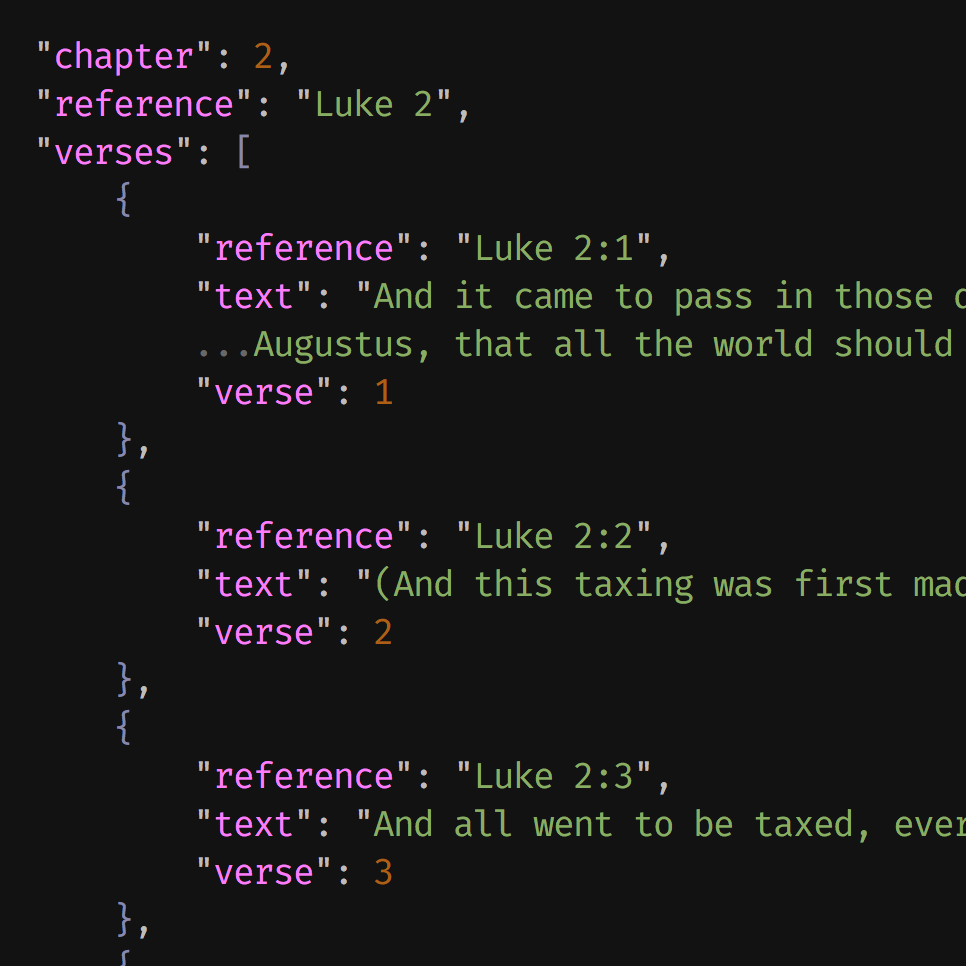I enjoyed Simon Cozens’ talk The Journey of a Word: How Text Ends up on a Page. It’s a good explanation of the overall process of how text works: the input text stream, fonts, shaping, language support, line breaking, and PDF generation. Lots of good stuff.
Blog
Dodecaglotta is a lovely polyglot Bible in progress — Latin, Greek, Church Slavonic, Syriac, Coptic, Ethiopic, Armenian, Old Georgian, German, English, Dutch, and French. The custom typeface looks very nice as well.
JSON Feed looks great — much nicer than RSS from a developer perspective, at least in my opinion. I’ve added a JSON Feed to this blog.
Blogging is low on the priority list at the moment, thanks to school. The preliminary classes for the master’s degree are going well. I’m writing assembly for my computer systems class, and I have to say, I really like assembly. (No sarcasm.) It’s beautiful and simple in a way I didn’t expect. I don’t see myself using it much, but it’s a good tool for the belt.
Oh, with Press, I realized a few days ago that it’s a good candidate for the first implementation of Low Ink (a JSON-based page description language that compiles to PDF). I’ll be re-architecting that part of Press so that it uses Low Ink. Also hoping to finish up the text part of Press (HarfBuzz, etc.) soon so that it’s usable for more than just basic drawing. (I’m dealing with font subsetting and encoding stuff at the moment.)
Bubbles
Playing around:

I wrote the circle chording code on my phone in Pythonista, then ported it to PlotDevice, fleshed it out, and textured it in Photoshop.
And God shall wipe away all tears from their eyes
Based on Revelation 21:4.

After a break of several months, I’m getting back to working on Press. Status is pretty much the same as last time I posted about it. (It’s actually even a little more behind than that, since I had HarfBuzz Python bindings working then, but now — after upgrading to macOS Sierra — I’m running into issues with PyGObject’s introspection module. I may end up having to write my own HarfBuzz bindings with CFFI. We’ll see.)
The high-level roadmap right now: get font embedding to work correctly, add support for embedding images (which should be fairly easy, I think), integrate ICU for language analysis and HarfBuzz for shaping, and add color space support.
As of now, I plan to use Press for making language charts (which I’ve been using PlotDevice for) and picture books. Once it’s to the point where I can do that, then I’ll start on Ink (low-level typesetting engine, intended for typesetting books, and higher-level rule-based engine for making it easier to work with).
George Saunders in The Braindead Megaphone, of the news but perhaps applicable elsewhere as well:
In surrendering our mass storytelling function to entities whose first priority is profit, we make a dangerous concession: “Tell us,” we say in effect, “as much truth as you can, while still making money.” This is not the same as asking: “Tell us the truth.”
Collected talks updated for October 2016
I’ve updated the collected talks for the October 2016 general conference, along with other talks given since April (worldwide devotionals, etc.).
Old and New Testaments in JSON

The JSON versions of the Old and New Testaments are now available.
Also, I’ve compared all five standard works against the text on LDS.org and have fixed dozens of typos, a list of which you can see in the README changelog. (I had mistakenly assumed that my source text had been corrected, but that doesn’t seem to be the case.) None of the typos were doctrinal in nature — they’re all minor typographical fixes — but I recommend updating nonetheless.